Joint work with Helena Schweiger and Alexander Stepanov. Published in: the American Economic Journal: Economic Policy, 14(3), August 2022 (pp. 322-351). VoxEU summary here.
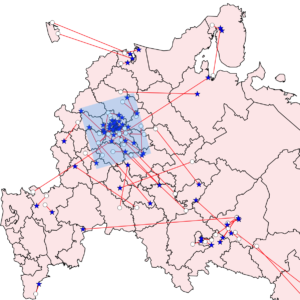
Abstract. We study the long-run effects of historical place-based policies targeting R&D: the creation of Science Cities in former Soviet Russia. The establishment of Science Cities and the criteria for selecting their location were largely guided by military and strategic considerations. We compare current demographic and economic characteristics of Science Cities with those of appropriately matched localities that were similar to them at the time of their establishment, and had similar pre-trends. We find that in present-day Russia, despite the massive cuts in government support to R&D that followed the dissolution of the USSR, Science Cities still host more highly skilled workers and more developed R&D and ICT sectors; they are the origin of more international patents; and they generally appear to be more productive and economically developed. We also rule out alternative explanations related to the differential use of public resources, and we find limited evidence of reversion to the mean. By estimating a spatial equilibrium model in our matched sample, we interpret these findings as the result of the interaction between persistence and agglomeration forces.
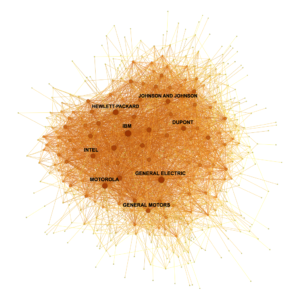
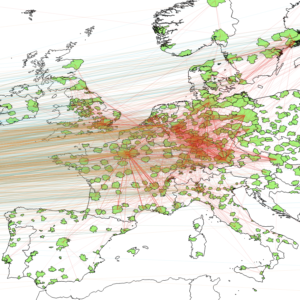 Abstract. In this paper I examine episodes in which superstar inventors relocate to a new city. In particular, in order to assess whether the beneficial effects of physical proximity to a superstar have a restricted network dimension or a wider spatial breadth (spillovers), I estimate changes in patterns of patenting activity following these events for two different groups of inventors: the superstar’s close collaborators, and all the other inventors in a given urban area, for both the locality where the superstar moves to and for the one that is left behind. In the case of collaborators, I restrict the attention to patents realized independently from the superstar. The results from the event study register a large and persistent positive effect on the collaborators in the city of destination, as well as a simultaneous negative trend affecting those still residing in the previous location. In the long run, these effects translate into an increased difference between the two groups of about 0.16 patents per inventor. Conversely, no city-wide spillover effect can be attested, offering little support to place-based policies aimed at inducing a positive influx of top innovators in urban areas.
Abstract. In this paper I examine episodes in which superstar inventors relocate to a new city. In particular, in order to assess whether the beneficial effects of physical proximity to a superstar have a restricted network dimension or a wider spatial breadth (spillovers), I estimate changes in patterns of patenting activity following these events for two different groups of inventors: the superstar’s close collaborators, and all the other inventors in a given urban area, for both the locality where the superstar moves to and for the one that is left behind. In the case of collaborators, I restrict the attention to patents realized independently from the superstar. The results from the event study register a large and persistent positive effect on the collaborators in the city of destination, as well as a simultaneous negative trend affecting those still residing in the previous location. In the long run, these effects translate into an increased difference between the two groups of about 0.16 patents per inventor. Conversely, no city-wide spillover effect can be attested, offering little support to place-based policies aimed at inducing a positive influx of top innovators in urban areas.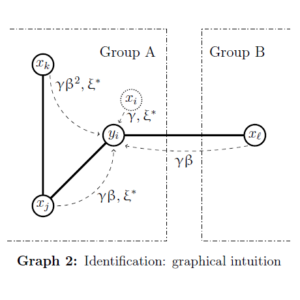 Abstract. Conventional methods for the estimation of peer, social or network effects are invalid if individual unobservables and covariates correlate across observations. In this paper we characterize the identification conditions for consistently estimating all the parameters of a spatially autoregressive or linear-in-means model when the structure of social or peer effects is exogenous, but the observed and unobserved characteristics of agents are cross-correlated over some given metric space. We show that identification is possible if the network of social interactions is non-overlapping up to enough degrees of separation, and the spatial matrix that characterizes the co-dependence of individual unobservables and covariates is known up to a multiplicative constant. We propose a GMM approach for the estimation of the model’s parameters, and we evaluate its performance through Monte Carlo simulations. Finally, we show that in a typical empirical application about classmates our approach might estimate statistically non-significant peer effects when conventional approaches register them as significant
Abstract. Conventional methods for the estimation of peer, social or network effects are invalid if individual unobservables and covariates correlate across observations. In this paper we characterize the identification conditions for consistently estimating all the parameters of a spatially autoregressive or linear-in-means model when the structure of social or peer effects is exogenous, but the observed and unobserved characteristics of agents are cross-correlated over some given metric space. We show that identification is possible if the network of social interactions is non-overlapping up to enough degrees of separation, and the spatial matrix that characterizes the co-dependence of individual unobservables and covariates is known up to a multiplicative constant. We propose a GMM approach for the estimation of the model’s parameters, and we evaluate its performance through Monte Carlo simulations. Finally, we show that in a typical empirical application about classmates our approach might estimate statistically non-significant peer effects when conventional approaches register them as significant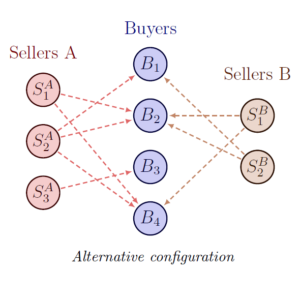 Abstract. This paper develops a framework for the empirical analysis of the determinants of input supplier choice on the extensive margin using firm-to-firm transaction data. Building on a theoretical model of production network formation, we characterize the assumptions that enable a transformation of the multinomial logit likelihood function from which the seller fixed effects, which encode the seller marginal costs, vanish. This transformation conditions, for each subnetwork restricted to one supplier industry, on the out-degree of sellers (a sufficient statistic for the seller fixed effect) and the in-degree of buyers (which is pinned down by technology and by “make-or-buy” decisions). This approach delivers a consistent estimator for the effect of dyadic explanatory variables, which in our model are interpreted as matching frictions, on the supplier choice probability. The estimator is easy to implement and in Monte Carlo simulations it outperforms alternatives based on group fixed effects. In an empirical application about the effect of a major Costa Rican infrastructural project on firm-to-firm connections, our approach yields estimates typically much smaller in magnitude than those from naive multinomial logit.
Abstract. This paper develops a framework for the empirical analysis of the determinants of input supplier choice on the extensive margin using firm-to-firm transaction data. Building on a theoretical model of production network formation, we characterize the assumptions that enable a transformation of the multinomial logit likelihood function from which the seller fixed effects, which encode the seller marginal costs, vanish. This transformation conditions, for each subnetwork restricted to one supplier industry, on the out-degree of sellers (a sufficient statistic for the seller fixed effect) and the in-degree of buyers (which is pinned down by technology and by “make-or-buy” decisions). This approach delivers a consistent estimator for the effect of dyadic explanatory variables, which in our model are interpreted as matching frictions, on the supplier choice probability. The estimator is easy to implement and in Monte Carlo simulations it outperforms alternatives based on group fixed effects. In an empirical application about the effect of a major Costa Rican infrastructural project on firm-to-firm connections, our approach yields estimates typically much smaller in magnitude than those from naive multinomial logit.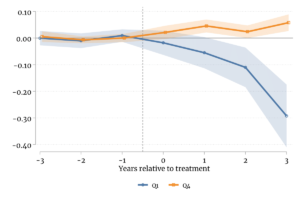 Abstract. We explore the effect of a reduction in overall labor costs, indirectly induced by an Italian reform that weakened employment protection legislation, on the productivity distribution of manufacturing firms. Due to the unique institutional features of the Italian collective bargaining system, in the manufacturing sector the reform led to a clean reduction in average worker compensation, without altering the average structure of employment relationships. This decrease in labor cost resulted in a reduction in average total factor productivity (TFP) among less productive firms, and an increase at the upper end of the distribution. We pair these findings with increased entry and exit dynamics among low-productivity firms, suggesting the presence of an adverse selection mechanism at the bottom of the TFP distribution, enhanced by the reform. We formalize this concept via a general equilibrium model that links productivity to frictions in the markets for inputs.
Abstract. We explore the effect of a reduction in overall labor costs, indirectly induced by an Italian reform that weakened employment protection legislation, on the productivity distribution of manufacturing firms. Due to the unique institutional features of the Italian collective bargaining system, in the manufacturing sector the reform led to a clean reduction in average worker compensation, without altering the average structure of employment relationships. This decrease in labor cost resulted in a reduction in average total factor productivity (TFP) among less productive firms, and an increase at the upper end of the distribution. We pair these findings with increased entry and exit dynamics among low-productivity firms, suggesting the presence of an adverse selection mechanism at the bottom of the TFP distribution, enhanced by the reform. We formalize this concept via a general equilibrium model that links productivity to frictions in the markets for inputs.